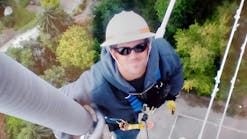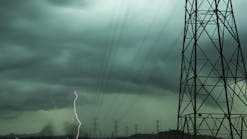Winter weather and the freezing temperatures that accompany it can hit the power grid hard. However, several speakers during a December 5 webinar hosted by the American Council on Renewable Energy said extreme winter weather should be seen as a matter of national security.
Jonathon Monken, a principal at consultancy firm Converge Strategies, said power grid stresses are already taking a severe toll on the Department of Defense and national security in a way that needs to be planned for carefully.
According to the most recent figures for the fiscal year 2021, there were more than 6,000 energy disruptions at DOD locations across the United States. Given that this is the DOD, the stakes are high.
"As far as I know, they're the only [grid] customer that launches nuclear missiles," Monken said.
As evidence of these weather impacts, the panelists pointed to NERC's 2023 Winter Reliability Assessment, which was released last month, as well as in FERC and NERC's final assessment on the December 2022 winter storms that resulted in substantial load shed throughout the Southeast US, which was released the same week. According to NERC's estimate, there is a possibility of electric shortages in parts of the North American electric system during above-normal peak conditions.
Monken also emphasized that the DOD doesn’t concern themselves with critical infrastructure outside defence parameters. He said 90% of US military bases rely on commercial utilities for energy, something he said was a huge point of exposure.
Monken said transmission investments could remove some of these single points of failure, helping alleviate security risks. He hoped that NERC's Interregional Transfer Capability Study could pinpoint areas where transmission investments may have the most impact, both in terms of promoting the use of renewable energy and safeguarding national security.
An additional problem is transmitting the wind power available in the middle of the country to the coasts where that power is needed, said Thomas Coleman, executive director of energy think tank Securing America’s Future Energy’s (SAFE) grid security project.
There isn’t an ability to transfer the electrons to the coasts, Coleman said.
Because each military installation is unique, Coleman said, the risk of facilities going without electricity extends beyond that of a regular business.
“We really need to understand all the unserved energy that is occurring over the span of a year … and when we can get our tools and planning processes to be able to have that kind of granular view, we’re in a much better position to be able to make sure all the critical needs are being met,” Mark Olson, NERC's manager of reliability evaluations, said.
Grid planners and DOD can better understand each other's demands and capabilities if they collaborate, Olson said. Future research, he said , might guarantee that the system is adaptable enough to constantly optimize energy consumption rather than only avert catastrophic events.


